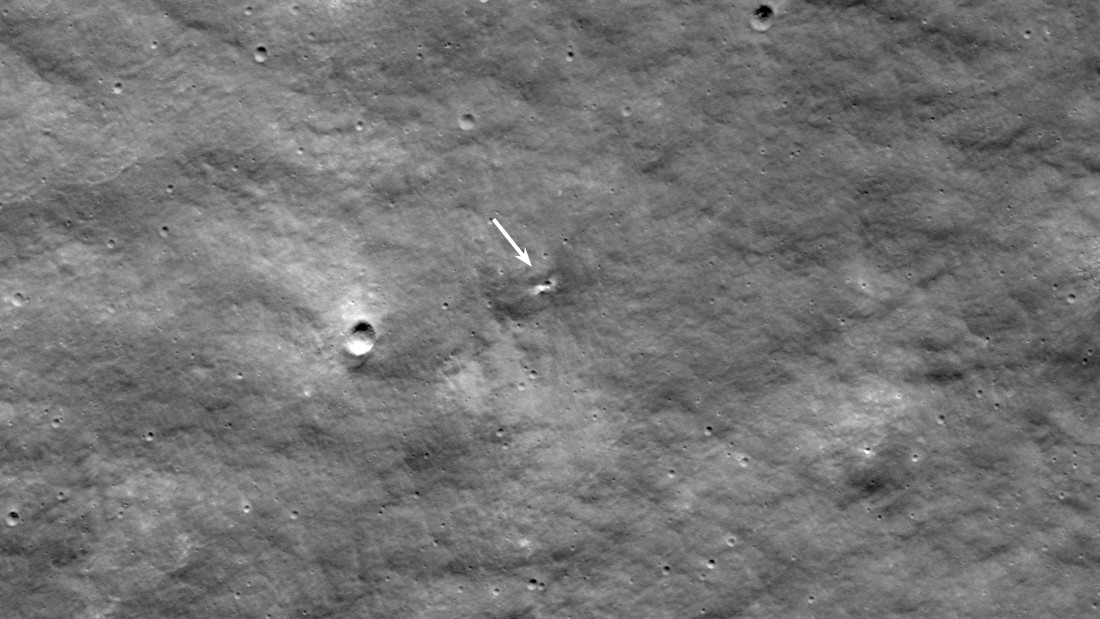Russia's Luna 25 lunar lander left a 33-foot-wide crater when it crashed into the moon, NASA images reveal
Russia's failed lunar probe mission likely created a crater on the southeastern region of the moon.

When Russia's Luna 25 lunar probe crashed into the moon on Aug. 19, the impact likely created a 33-foot-wide (10 meters) crater, according to new photos released by NASA.
The Russian moon lander was expected to touch down on the south pole of the moon around Aug. 25, where it was set to help researchers search for water ice, examine lunar rocks and analyze the moon's surrounding atmosphere for a year before returning to Earth. However, things took a turn for the worse on Aug. 19, when "communication with the Luna 25 spacecraft was interrupted" following an attempt to adjust the spacecraft's orbit, the Russian space agency, Roscosmos, announced on the social media network Telegram.
On Aug. 20, officials determined that Luna 25 "ceased to exist as a result of a collision with the surface of the Moon," Roscosmos added in the statement. The Russian government has formed a commission to investigate the issues that led to the spacecraft's failure, officials said.
Related: Scientists map 1,000 feet of hidden 'structures' deep below the dark side of the moon
Now, new NASA images reveal that this crash left its mark — literally. The impact point of Luna 25 was on the steep inner rim of the Pontécoulant G crater on the southeastern part of the moon, which was about 250 miles (400 kilometers) short of its intended landing point. NASA scientists captured images of this area using a camera mounted atop the agency's Lunar Reconnaissance Orbiter (LRO), which is currently orbiting the moon, revealing a brand-new dent on the lunar surface.
"Since this new crater is close to the Luna 25 estimated impact point, the LRO team concludes it is likely to be from that mission, rather than a natural impactor," NASA officials wrote in a statement. This adds to the more than 100,000 craters scattered across the moon.
Despite Luna 25's crash, Russia plans to expedite a series of future lunar follow-up missions, including Luna 26 and Luna 27, according to CNN. While Russia may have failed to reach the moon's south pole on the recent mission, India's Chandrayaan 3 spacecraft successfully landed in this lunar region on Aug. 23.
Get the world’s most fascinating discoveries delivered straight to your inbox.
"What India has shown is that they now have the capability to soft-land on the moon," Clive Neal, a professor of planetary geology at the University of Notre Dame, told IEEE Spectrum. "And it’s one of those capabilities, as Russia has proven, if you don’t use it, you lose it."
India's rover has already confirmed the presence of sulfur and several other elements in the moon's south pole and will continue to investigate the region for frozen water, which could help provide hydration for astronauts on future missions, the Indian Space Research Organization said in a statement.

Kiley Price is a former Live Science staff writer based in New York City. Her work has appeared in National Geographic, Slate, Mongabay and more. She holds a bachelor's degree from Wake Forest University, where she studied biology and journalism, and has a master's degree from New York University's Science, Health and Environmental Reporting Program.


